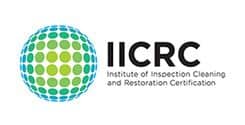Floods can be devastating, leaving behind a trail of destruction that can take months or even years to repair. When the waters finally recede, it's natural to want to return to your home as soon as possible. However, reoccupying your home after a flood requires careful planning and execution to ensure the safety and well-being of you and your family. In this article, we will discuss the steps you need to take to safely reoccupy your home after a flood.
1. Wait for Official Clearance
The first and most important step is to wait for official clearance from local authorities before returning to your home. They will assess the damage and determine whether it is safe for residents to return. Do not attempt to enter your home or the surrounding area until you have been given the green light to do so.
2. Wear Protective Gear
When you first return to your home, it's crucial to wear appropriate protective gear. This includes rubber gloves, boots, and a face mask or respirator. Floodwaters can contain harmful contaminants, such as sewage, chemicals, and mold, which can pose serious health risks if you come into contact with them.
3. Assess the Damage
Before you can begin the process of cleaning and repairing your home, you need to assess the extent of the damage. This will help you determine what needs to be done and prioritize tasks accordingly. Look for signs of structural damage, such as cracks in the walls or foundation, as well as any damage to utilities, such as gas lines, electrical systems, and plumbing. If you suspect any structural or utility damage, contact a professional immediately.
4. Document the Damage
For insurance purposes, it's essential to document the damage to your home and belongings thoroughly. Take photographs and videos of all affected areas, and make a detailed list of damaged items. This will help streamline the insurance claims process and ensure you receive the compensation you need to rebuild and repair your home.
5. Remove Water and Dry Out Your Home
Once you have assessed and documented the damage, the next step is to remove any standing water and begin the drying process. Use pumps or wet vacuums to remove standing water, and open windows and doors to promote air circulation. Dehumidifiers and fans can also help speed up the drying process. Keep in mind that it can take several days or even weeks for your home to dry out completely, depending on the extent of the damage.
6. Clean and Disinfect
After your home has been dried out, it's time to clean and disinfect all affected surfaces. This is crucial to prevent the growth of mold and bacteria, which can lead to serious health issues. Use a mixture of hot water and heavy-duty cleaner to scrub down walls, floors, and other surfaces. Be sure to also clean and disinfect any salvageable belongings, such as furniture and appliances.
7. Check for Mold
Mold can begin to grow within 24-48 hours after a flood, so it's essential to check for signs of mold growth as soon as possible. If you find mold, it's crucial to remove it immediately, as it can cause serious health problems if left untreated. In some cases, you may need to hire a professional mold remediation company to ensure the mold is removed safely and effectively.
8. Repair and Replace Damaged Items
Once your home has been cleaned and disinfected, you can begin the process of repairing and replacing damaged items.This may include repairing structural damage, replacing damaged drywall or flooring, and purchasing new furniture and appliances. Be sure to work with licensed contractors and follow all local building codes and regulations during the repair process.
9. Restore Utilities
Before you can move back into your home, you'll need to have your utilities restored. This includes gas, electricity, and water services. Contact your utility providers to schedule inspections and reconnections, and be prepared to provide documentation of the repairs made to your home.
10. Prepare for Future Floods
Finally, as you rebuild and repair your home, consider taking steps to protect your property from future floods. This may include installing flood-resistant materials, elevating utilities and appliances, and creating barriers to prevent water from entering your home. By taking these precautions, you can reduce the risk of future flood damage and ensure the safety of your home and family.
Conclusion
Reoccupying your home after a flood can be a daunting and emotional process. By following these steps and working with professionals when necessary, you can ensure the safety and well-being of your family as you rebuild and repair your home. Remember to be patient, as the process may take time, and prioritize the health and safety of your loved ones above all else.







